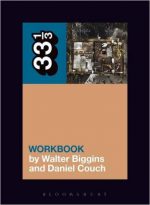At first, The Electric House looks like a rehash of The Haunted House, from just a year before. A fully automated, “modern” house goes haywire—its time-saving contraptions become booby traps, ensnaring the very people whose time they’re meant to spare. From The Scarecrow’s Rube Goldberg-like kitchen to the “efficient” build-it-yourself house of One Week, Keaton’s oeuvre is full of modern “conveniences” that turns hilariously inconvenient. Electric seems another variation of those Buster trope.
That’s true, as far as it goes. But I found Electric funnier than Haunted, and watching the two back-to-back helped me to understand why.
In some ways, Haunted seems like a test run for Electric. In the former film, we know from the beginning that the “haunted” house is really jerry-rigged by the criminals using the place as a hideout. But it’s key that we don’t know exactly how it’s booby-trapped until Buster enters it, in the short’s second half. The place keeps surprising us, so we are (just as Buster is) kept off-guard by each gag, by each new room. Haunted’s jokes threw me off-balance, so that it seems like there’s no foundation for the comedy and the narrative. That may be by design, as the plot is rickety, the motives are ill-considered, and some of the characterizations feel as though they weren’t quite figured out until the camera started rolling. It’s got a ramshackle energy that, because of its instability, makes the movie feel surreal instead of ordered. It tries to operate on dream logic, and just barely gets by that way; the smoke and mirrors obscure its shaky structure. Because of that, The Haunted House elicits more bafflement than bellylaughs.
The Electric House, though, is sounder. Through a mix-up, Buster gets hired by a millionaire (Big Joe Roberts) to make his mansion into a “fully automated” home while the wealthy man is on an extended vacation. Buster is armed only with his botanist’s degree and with what’s essentially an “Electricity for Dummies” book. He gets to work. The millionaire comes back. Buster gives a quick demo, and things go about as well as you’d expect.
Better, actually, all things considered. Some of Buster’s innovations—the library that thrusts out the book you’ve selected, like a punch waiting to happen—are obviously bonkers. Many of them, though, look really cool and practical.

There are, of course, a few glitches in the system.
The problem with all perfectly efficient machines, ultimately, is that they are designed by imperfect, scatter-brained people. Human error causes most of the hijinks in The Electric House, because Buster has designed his automatons without having the people who use them in mind. As a filmmaker, Keaton knew this well—what else is cinema but the use of imperfect contraptions to capture unruly human behavior?—and so he effectively foreshadows the house’s utter breakdown.
So, structure: The film’s first half shows us the contraptions, and the various seams within them that could come undone. The movie’s second half features the millionaire showing off the house to a group of potential investors, and we get to see all those seams unravel, as Buster and Bog Joe watch helplessly. The model house becomes a haunted, nightmare house. It’s funny because, as an audience, we’ve already been prepped to all the ways that the place will become a calamity. Whereas The Haunted House felt like a sudden crash, The Electric House is a slow-motion wreck; we see it coming but there’s nothing we can do but laugh nervously in self-defense. The airtight narrative structure allows for the laughs to build, because of their inevitability.
Things go so poorly that Buster thinks the house is actually haunted. He knows how the house should operate—he designed it, after all—so, when it fails, the “haunting” is especially funny. It turns out, though, that there’s a human gremlin in the works who is intentionally sabotaging the affair, getting oblique revenge on Buster. We know this; Buster does not; and thus Buster’s fright is especially hilarious. Knowing what’s ahead is, for the audience, crucial here. The use of foreshadowing as a kind of comic timing is the key difference between Electric and Haunted. The lack of foreshadowing makes Haunted a little spookier, a little stranger, but it also means the jokes don’t land as sharply as they do in Electric.
Besides, Electric is plenty weird, for a two-reeler comedy. Buster does not save the day nor get the girl. Hell, he doesn’t even get his commission, even though it’s not exactly his fault that “The Electric House” blew a fuse. The movie ends with Buster’s suicide attempt by drowning, which is thwarted by his own contraption—a quick draining device for the swimming pool. He can’t even kill himself right, and that made me laugh out loud. Instead, he ends up sucked through a pipe, and plopped next to his sabotaging rival. They’re both literally washed up, and just as out-of-work as they were at the movie’s beginning. The movie ends, then, pretty much as it begins; the movie is divided evenly into two complementing halves; setups and payoffs run all over The Electric House. The thing is orderly to an extreme, making up for and improving upon The Haunted House’s chaos.






Pingback: Buster Keaton #16: Day Dreams (1922) | Quiet Bubble
Pingback: Buster Keaton Short Films Collection 1922-1923, Part III | Watching Silent Films